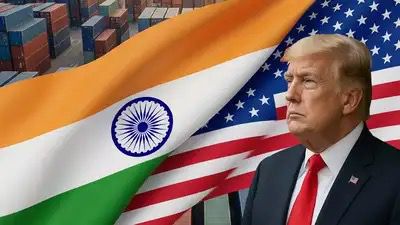 Image Source: Times Of India
Image Source: Times Of India
US President Donald Trump has intensified trade pressure on India, reiterating his plans to significantly raise the existing 25% tariff on Indian imports within the next 24 hours. Citing India’s persistent purchases and resale of Russian oil amid the Ukraine war, Trump labeled India “not a good trading partner” and warned of substantial additional tariffs as a punitive measure. This announcement signals a new phase of US-India trade tensions with profound implications for exporters, bilateral ties, and global supply chains.
Key Highlights of Trump’s Tariff Threat
The current 25% tariff, effective since August 7, 2025, was imposed following Trump’s July 31 executive order targeting countries trading Russian oil in defiance of Western sanctions.
Trump indicated the tariff rate would be raised “very substantially,” without specifying exact figures, emphasizing his dissatisfaction over India benefiting financially from discounted Russian crude.
Accusing India of “fueling the war machine,” Trump criticized New Delhi for not halting its Russian oil imports despite international calls.
The US maintains a significant trade deficit with India, importing $87 billion worth of goods in 2024 versus $41 billion Indian purchases from the US.
India responded swiftly, calling the threat “unjustified,” highlighting hypocrisy as the US and EU continue substantial trade with Russia while penalizing India.
Indian officials underscored that purchasing Russian oil helped stabilize global oil prices amid supply disruptions and denied any intent to undermine sanctions.
Context and Background
Trump’s latest tariff escalation builds on months-long pressure on India to curtail imports of Russian oil, citing Western efforts to isolate Russia economically.
India sources over a third of its crude oil from Russia, benefiting from lower prices and supplying refined products to various international markets, which Trump criticized as profiteering.
The 25% tariff initially applied to over 80 products, including textiles, metals, chemicals, and pharmaceuticals, disproportionately impacting Indian exporters.
The tariff conflict is compounded by longstanding US demands that India lower agricultural tariffs—areas where India is reluctant to yield given the sector’s socio-economic importance.
Trade and Diplomatic Fallout
India’s trade ministry reaffirmed commitment to protecting national interests, including defending its sovereign right to choose suppliers.
Indian exporters face uncertainty given the prospect of higher tariffs, prompting calls for government support through export promotion measures and tariff countermeasures.
Diplomatic channels are reportedly working to de-escalate tensions ahead of planned bilateral trade talks aimed at resolving tariff disputes.
Meanwhile, Trump’s tariff moves fit within his broader strategy of aggressive trade realignment toward “fairer” US trade deals, imposing tariffs across multiple countries including Canada, China, Brazil, and South Korea.
Global Supply Chain and Market Impact
Heightened tariffs threaten to disrupt Indo-US supply chains across sectors such as textiles, pharmaceuticals, and chemicals where India is a key supplier.
Multinational companies dependent on cost-effective Indian inputs are weighing shifts in sourcing strategies and route-to-market optimizations.
Stock markets and investor sentiment have reacted cautiously, factoring in tariff-driven risks alongside broader geopolitical uncertainties.
Economic Analyst Perspectives
Experts view the tariff escalation as a high-stakes negotiation tactic by Trump to extract trade concessions from India.
The move potentially risks retaliatory policies, increased costs for American enterprises reliant on Indian imports, and long-term damage to bilateral economic relations.
Analysts emphasize the complexity of balancing geopolitical alliances, economic security, and market access amid ongoing conflict-related sanctions.
Conclusion: Navigating a Turbulent Trade Landscape
Donald Trump’s impending sharp hike in Indian import tariffs represents a major escalation in US-India trade tensions driven by geopolitical and economic interests. For India, the challenge lies in safeguarding export revenues and strategic autonomy while fostering diplomatic dialogue to preserve a vital partnership. This unfolding episode underscores the fragility of global trade relations in a polarized world and highlights the critical need for nuanced engagement to minimize fallout and promote sustained cooperation.
Sources: Times of India, Reuters, Economic Times
Advertisement
Advertisement




